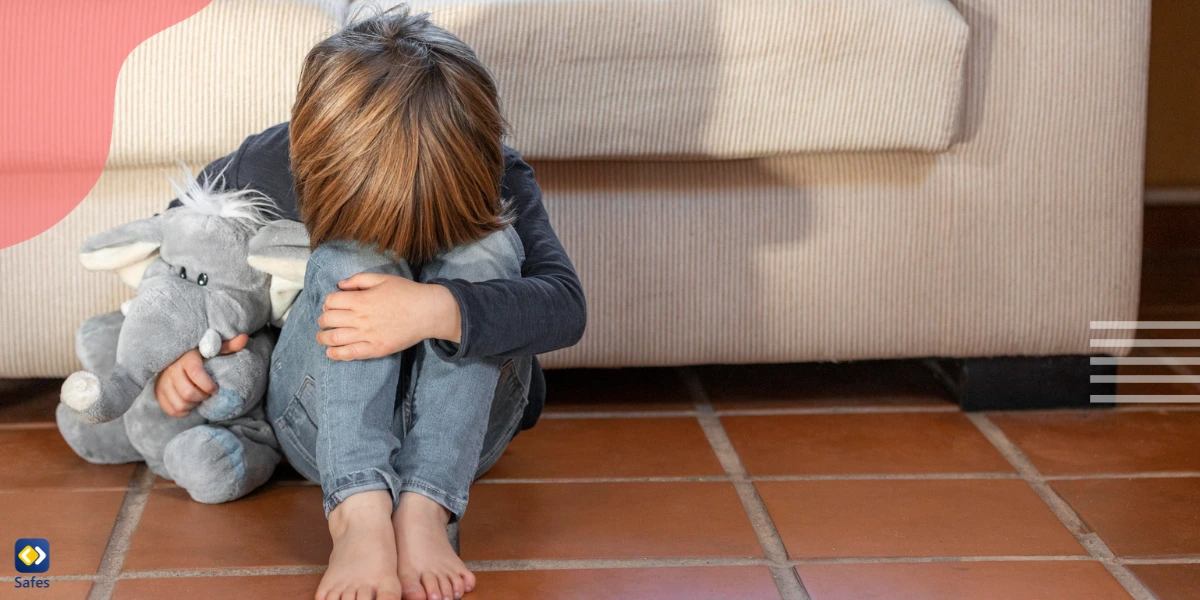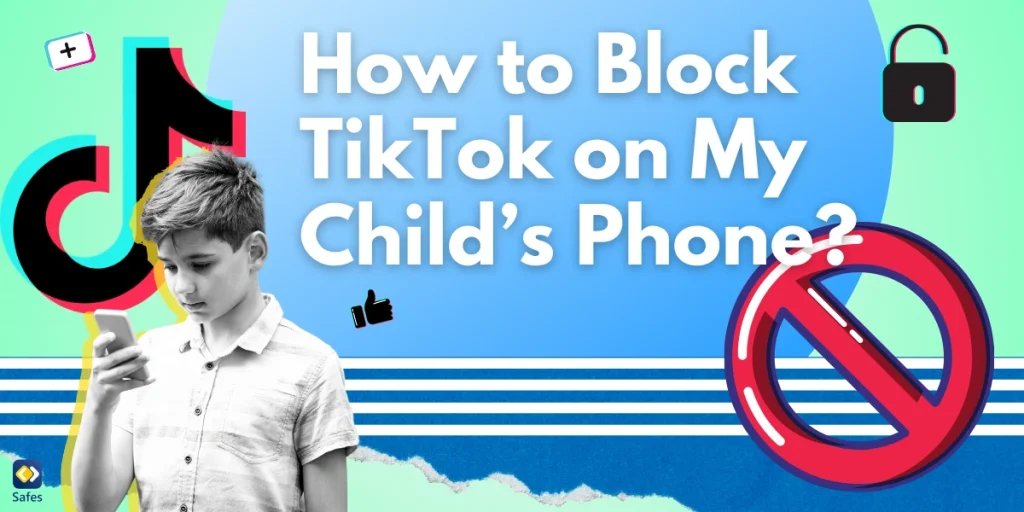Parents must give considerable thought to this complicated and delicate task of understanding depression in children. Since children frequently express their feelings differently than adults, it can be difficult to identify depression symptoms in them. Prolonged melancholy, behavioral changes, and physical symptoms like headaches or stomachaches are common signs. Even while mood fluctuations happen occasionally, it’s important to recognize trends that hold true over time. This article will focus on the signs of depression in kids and how you can recognize them.
Download and Start Your Free Trial of the Safes Parental Control App
Understanding Depression in Children
Parents need to treat children’s depression seriously and be aware of it because it is a complex and sometimes misunderstood condition. Identifying symptoms of depression in children can be challenging, since they may not express their emotions in the same ways that adults do. Common symptoms include persistent depression, behavioral abnormalities, and physical issues including headaches or stomachaches. While children often experience mood swings on occasion, it’s crucial to identify persistent behavioral patterns.
Furthermore, depression can present itself in a variety of ways depending on the developmental stage. Little ones could use play or behavioral issues as a way to communicate their feelings, while teens might show more obvious symptoms like social disengagement or gradually performing badly in school. Parents can more accurately detect when their kid may be experiencing emotional difficulties if they are aware of the subtle differences in how depression manifests itself in various age groups.

How to Explain Depression to a Child
Addressing childhood depression requires fostering an atmosphere that values open communication. This is where open communication skills come in handy. Youngsters may be reluctant to communicate their emotions out of concern for criticism or misinterpretation. It’s critical for parents to routinely start talks with their children about their feelings and to reassure them that it’s acceptable to express their opinions. In addition to fostering trust, this continuous communication keeps parents updated on their child’s mental health.
Active listening is an effective strategy for having discussions regarding emotions. Instead of jumping to conclusions, give your child’s point of view some thought. Acknowledge their emotions, even if they don’t seem justified given the circumstances. Your child will feel more understood and supported as a result of this affirmation, which will increase their emotional stability.
Parents should also be aware of behavioral changes and nonverbal clues that can point to underlying emotional discomfort in their children. When a youngster is reluctant to speak, they might find another way to communicate by using painting, writing, or other creative activities. Parents may provide a solid foundation for addressing and managing their child’s mental health by regularly encouraging open communication.
Observing Changes in Behavior and Mood Disorders in Children
Children undergo numerous developmental changes as they grow, and it’s natural for their behavior to evolve. However, persistent and drastic changes may be indicative of underlying emotional struggles. While some moodiness is normal during adolescence, abrupt shifts in behavior, such as social withdrawal or extreme irritability, warrant closer attention.
One key aspect of observing changes in behavior is maintaining a balance between vigilance and respecting your child’s need for independence. It’s crucial to strike a delicate balance between being involved in your child’s life and respecting their autonomy. This balance allows parents to detect potential signs of depression while also nurturing their child’s growing sense of self.
In addition to monitoring changes at home, collaborating with teachers and school staff is essential. They can provide valuable insights into your child’s behavior in different environments. Establishing open communication with educators creates a collaborative support system, ensuring that any concerns are addressed comprehensively.

How to Help Your Child With Depression
Here are a few strategies parents can use when struggling with Major Depressive Disorder in children.
Connect with Teachers and Peers
A child’s life outside the house is greatly influenced by their teachers, therefore keeping a close relationship with them can provide important information about the child’s wellbeing. Parents may keep updated about their children’s academic achievement, social interactions, and any obvious behavioral changes by maintaining regular communication with instructors. Instructors can see things that parents would not see in their children at home, giving them a more complete picture of their general wellbeing.
Furthermore, encouraging positive peer relationships is crucial for a child’s social and emotional development. Healthy friendships contribute to a supportive environment, reducing feelings of isolation and loneliness that can exacerbate depression. Parents can facilitate social connections by organizing playdates, encouraging extracurricular activities, and promoting positive communication skills.
Encourage Healthy Lifestyle Habits
Encouraging a healthy lifestyle is essential to bolstering a child’s mental health as well as their general wellbeing. Basic needs like getting enough sleep, exercising frequently, and eating a healthy food all support a child’s resilience both physically and emotionally. Establishing regular routines that give priority to these vital components of a healthy lifestyle is something that parents should do.
A child’s ability to regulate their emotions and cognitive abilities depends on getting enough sleep. A peaceful nighttime routine and a consistent sleep schedule can improve the quality of your sleep. In a similar vein, promoting regular exercise produces endorphins, which can help with stress reduction and mood enhancement in addition to improving physical health.
Nutrition is important for mental health, and a balanced diet gives the brain the nutrition it needs to operate. Reducing the amount of processed food consumed and making sure the child’s diet includes a range of fruits, vegetables, whole grains, and lean meats promotes their general health.
Parents build a solid foundation for their child’s mental health and resilience by emphasizing these lifestyle practices. These behaviors not only delay the onset of depression but also play a significant role in the management and treatment of current mental health issues in a comprehensive manner.
Conclusion
To recognize and treat depression in children, a comprehensive strategy involving awareness, dialogue, and proactive intervention is required. By fostering open communication, understanding the varied ways that depression can manifest in varying age groups, and creating a supportive environment, parents can play a significant part in supporting their child’s mental health.
Your Child’s Online Safety Starts Here
Every parent today needs a solution to manage screen time and keep their child safe online.
Without the right tools, digital risks and excessive screen time can impact children's well-being. Safes helps parents set healthy boundaries, monitor activity, and protect kids from online dangers—all with an easy-to-use app.
Take control of your child’s digital world. Learn more about Safes or download the app to start your free trial today!




